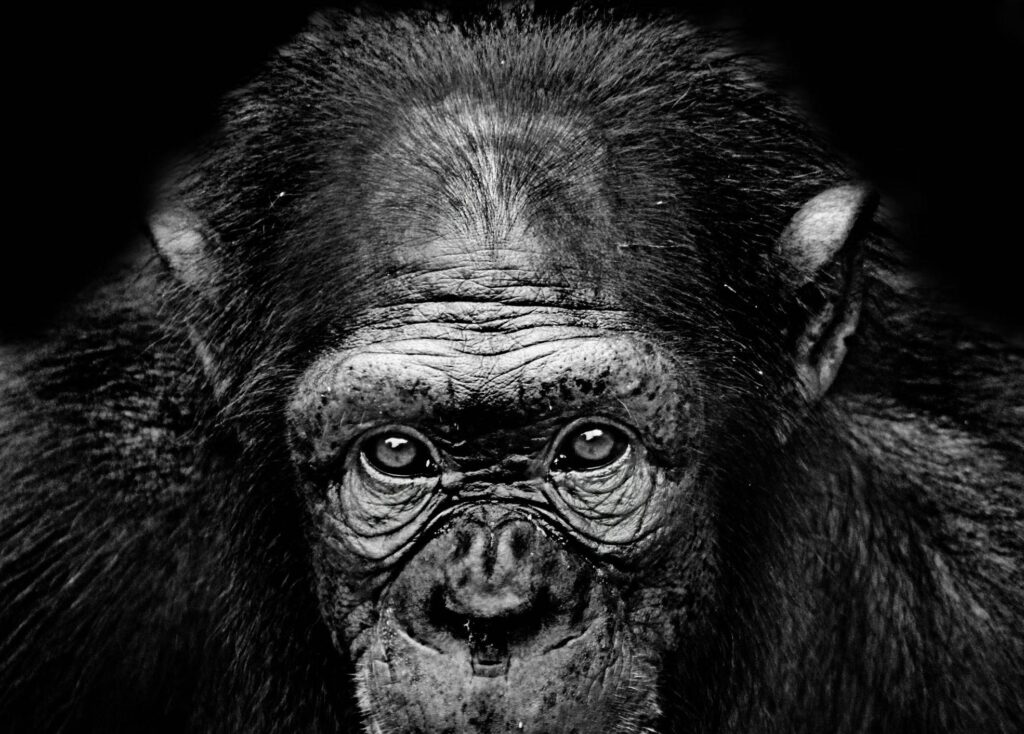Teeth are something most of us don’t think about much – in fact, we often take for granted how easily they allow us to eat and chew our food. But have you ever wondered how they got that way?
Our dental anatomy is the result of millions of years of evolution. If we trace this journey, it tells us the story of our ancestors – from what they ate to how they lived and survived.
In this post, let’s travel back through time to uncover how our teeth came to look and function the way they do today.
The Origins of Human Teeth: Early Ancestors
Our earliest human ancestors, hominins, lived millions of years ago and had a mixture of features that were similar to both apes and early humans. They were the first human predecessors that began to show signs of bipedalism (walking on two legs) – however, like apes, they did still spend some time in the trees. And also like apes, they possessed canines significantly larger and more pointed than modern humans, and their molars were quite large and contained more enamel. These robust characteristics of early hominin dentition suggest an omnivorous diet of fruits, leaves, nuts, tubers, and some meat.
Curiously, this early dentition and diet share substantial similarities with our current closest living relative – the chimpanzee.
Key Evolutionary Shifts: Homo Erectus
Homo erectus represents a huge leap in human evolution – one that brings us much closer to modern man. In these nomadic tribes, we begin to see a reduction in both canine and molar size, indicating considerable lifestyle change as primitive stone tools come into play. With the ability to use tools to grind food and butcher meat, Homo erectus began to rely less on tough plant material and more on meat and marrow.
While still omnivorous, the increased inclusion of scavenged meat in their diet was a rich source of protein and calories – one that likely supported the energy demands of growing a larger, more intelligent brain. Meat consumption was even more crucial in colder climates where plant based foods were more scarce, particularly in winter seasons.
At this point in time, roughly 1.89 million to 110,000 years ago, Homo erectus also began to slowly develop a smaller, parabolic jaw shape. This diverges from the large U-shape jaws found in hominins and modern apes.
The Rise of Homo Sapiens
Homo sapiens, aka modern humans, emerged around 300,000 years ago. The term “Homo sapien” literally means “wise man,” referring to our large brains, complex language, culture, and advanced tools and technology.
Increased use of fire and mastering of intricate tools allowed homo sapiens to cook food to a more chewable and digestable texture. Since we no longer needed large, rugged teeth to heavily chew through roots and thick plant matter, our teeth and jaws continued to decrease in size and structure. This change also included a decrease in enamel, which will become relevant later.
Soon, our third molars, otherwise known as wisdom teeth, became more vestigial and no longer fit properly in our compact jaws. This eventually led to the increasingly common problem of impacted wisdom teeth. Although, I suppose it’s a tradeoff as our smaller teeth and mouths contributed to an ability to produce a wide range of sounds that are used in language and socialization.
The Agricultural Revolution
The Agricultural Revolution marks a pivotal shift in human history as nomadic hunter-gatherer lifestyles began to break up as humans settled into agricultural societies. This occurred around 10,000 years ago at the end of the last Ice Age, when warmer and more stable climates allowed humans to farm in communities.
People began to rely on crops like wheat and rice, and they domesticated livestock like cattle, sheep, and goats for food and labor. As humans consumed more grains and carbohydrates, we inadvertently created an oral environment that was perfect for the bacteria that cause tooth decay. This, coupled with the less rugged tooth structure and thinner enamel than our ancestors, ushered in the age of cavities – a problem that continues to affect us today.
Modern Teeth and the Future
As our lifestyle continued to evolve and rely more heavily on processed foods, a growing disconnect emerged between between our evolutionary dental adaptations and modern diets.
Since we longer need to chew through tough, fibrous plant material and raw meat, our jaws have become somewhat underdeveloped – resulting in crowded and misaligned teeth. Our typical softer diets are rich in refined sugars and carbohydrates, promoting bad bacterial growth that leads to cavities and gum disease. But evolution never stops. Perhaps, over many generations, protective dental traits could become more commonplace. Or perhaps we will continue to rely on solutions like fillings and dental cleanings. One thing is for certain: whatever does happen, it will happen over the course of thousands and thousands of years.
Final Thoughts
The evolution of our teeth tells the story of human history – one reflecting our changing diets and environments. From the robust jaws and teeth of hominins, to the refined dentition of modern humans, we see an account of survival and adaptation.
As our teeth continue to evolve, advances in dental care and technology will likely shape our oral health for years to come.
Do you think that modern diets will lead to even further changes in our teeth? What do you think human jaws and teeth may look like thousands of year from now? Let me know your thoughts in the comments!
Sources:
- https://evolution-outreach.biomedcentral.com/articles/10.1007/s12052-010-0257-6
- https://www.nature.com/scitable/knowledge/library/overview-of-hominin-evolution-89010983/
- https://humanorigins.si.edu/evidence/human-fossils/species/homo-erectus
- https://humanorigins.si.edu/evidence/human-fossils/species/homo-sapiens
- https://education.nationalgeographic.org/resource/development-agriculture/

